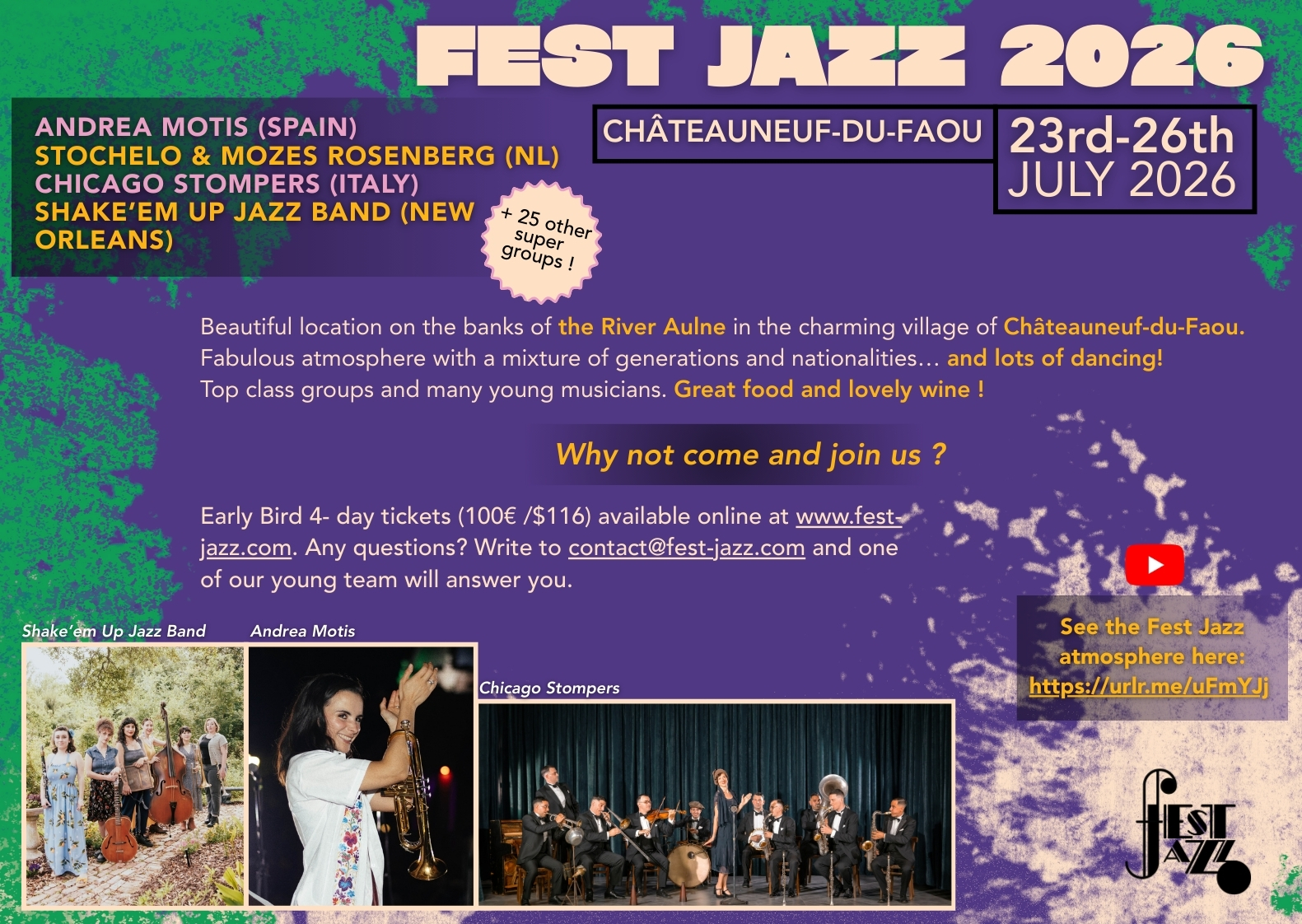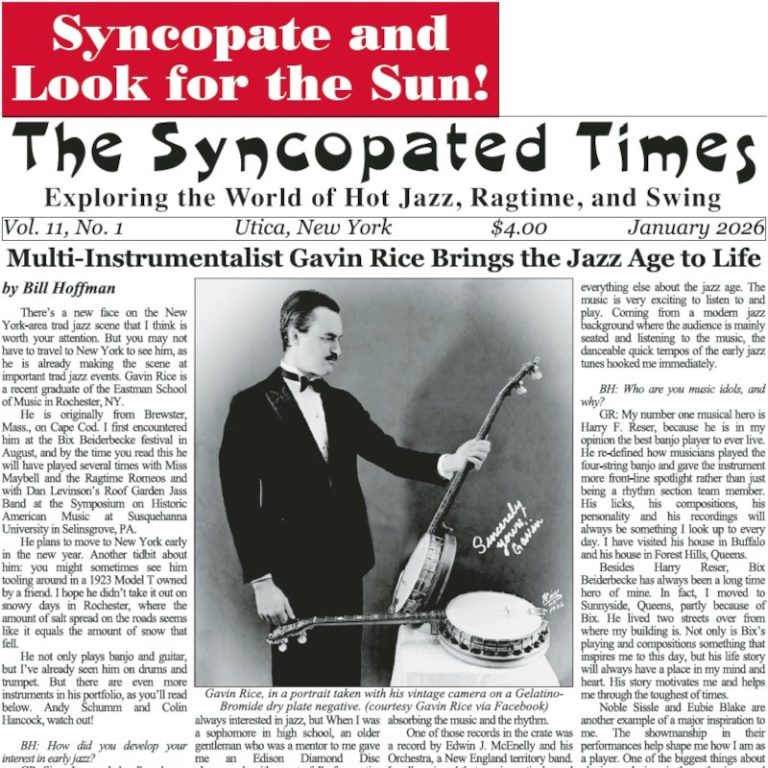(Don’t worry! There’s no need to have your mother sew your name into your clothes!)
Since I’m the executive director of the New Orleans Trad Jazz Camp, The Syncopated Times asked me to give some insight into what exactly goes on at a Jazz Camp. I’ll be covering the basic format and information for the four Jazz Camps that concentrate on traditional jazz and swing: The New Orleans Trad Jazz Camp, San Diego Jazz Camp, New York Hot Jazz Camp, and the Welbourne Jazz Camp.
Camp?
First, the word “camp” might be a bit misleading. Although the Sacramento Adult Jazz Camp actually did camp in the woods, in New Orleans our idea of camping is a four-star hotel.
Each camp has its own distinctive style. To quote Molly Ryan, co-founder of the New York Hot Jazz Camp:
“The best part of all these adult camps is that each is a totally unique experience. San Diego is instrumentals only with a shorter camp week (and nonstop beautiful weather). New Orleans is the mega-beast of spirit and early jazz and Welbourne incorporates early styles of dancing and feels like a non-stop jam session on a 520 acre family home, one hour west of Washington DC and…New York is well, New York!”
The granddaddy of all Trad Jazz Camps is, of course, the Sacramento Traditional Jazz Camp. The camp started in 1986 and was divided into separate weeks, one for adult campers and one for a youth camp. Sacramento has now focused all of its energies into their youth camp, ending their adult camp. Perhaps a future article might cover the aspects of their youth camp in detail or a retrospective of the Sacramento Camp. Bill Dendle is the camp director.

WHO GOES TO JAZZ CAMP?
Generally, all of the camps are a place for amateur and semi-pro musicians to learn about, and play traditional jazz:
Some who attend, played music in high school or college but were forbidden by their parents or good judgment not to seek a career in the music business! They now have the luxury of time and money to re-experience the joy of their early love of music.
Some are “weekenders” (a non-pro who picks up the occasional gig, mostly on the weekend) wanting to improve to that next level.
Some are newbies who have been playing for a few years and now want to challenge themselves to expand their musical skills and play with a band.
Some are musicians who play in orchestras, have been classically trained, and want the challenge of playing without written music in front of them.
Some are music teachers wishing to understand the basics of early jazz to share with their students.
Some are pianists who have never played with a band and decide to give a jazz band a try.
And some are young musicians starting out in the music business who are seeking to make connections with the professional musicians in the faculty, learn the ropes, and get a leg up on the competition.
SKILL LEVELS & ENSEMBLE PLAYING
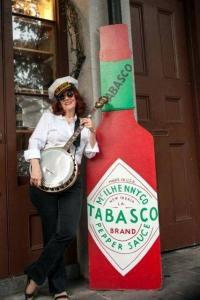
Welbourne accepts dancers and musicians of all skill levels, even beginners. The rest of the camps expect a basic proficiency on your instrument to attend. (I always say, “I want to make sure they know which end of the horn to blow into.”) Since Welbourne limits the number of campers, there is much more one on one interaction with the faculty. Their schedule is flexible to the needs of their campers.
San Diego had decided at their inception in the mid 1990s to not audition musicians who came to camp. Their idea was to simulate the dynamics of a “causal” (occasional, not a steady) gig. With different people in each ensemble with different skill levels you must find ways to make it work.
The New Orleans camp was inspired by San Diego to adopt the same round robin approach. In the afternoons there are two different ensembles composed of completely different players. The faculty member stays in the same room and the campers switch classes. This goes on each afternoon giving the campers a chance to work with most of the faculty and play with most of the other campers.
The New York camp places campers in ensembles on the second day. They stay in that same ensemble for the entire week and work with the same instructor. This approach gives the campers an opportunity to delve more deeply into the music and fine tune the selections they’ll ultimately perform at the concert. It also gives the instructors a better opportunity to work individually with the members of the ensemble.
Both approaches have their advantages.
THE MUSIC SELECTIONS
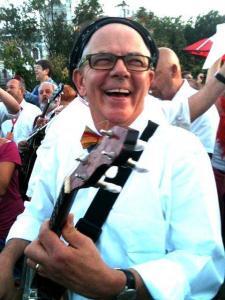
The camps choose different songs each year.
New Orleans has eight pop songs and four arrangements for the week and leans heavily toward the music and arrangements associated with New Orleans. Songs are chosen that are associated or written by Louis Armstrong, King Olivier, Jelly Roll Morton, the New Orleans Rhythm Kings, and/or the Original Dixieland Jazz Band. The pop songs chosen cover tunes from the teens through the thirties. Vocalists are given a choice of some of the songs from the instrumentalists list, and some additional choices for vocalists only.
San Diego picks eight songs usually standards that are classic jazz tunes from the twenties and thirties. Some songs are chosen to add a slight challenge for the campers.
In New York, each band has its own repertoire and performs three songs at the end of camp. Songs are chosen from an already compiled list Instructors and campers choose the songs for their band from the list, although campers are permitted and even encouraged to suggest alternatives. Vocalists work with the vocal instructor to pick their songs.
Welbourne chooses songs associated with the classic New Orleans repertoire. Songs are selected that works best for both dancers and musicians.
VOCALISTS
The San Diego camp is open to instrumentalists only. New York, New Orleans, and Welbourne accept vocalists.
New Orleans has two faculty vocalists on staff and the vocalists work with a vocal accompanist for the week. Vocalists sit in at the jam sessions at night, have a special midweek evening showcase and are featured at the Preservation Hall afternoon and the final performance.
New York’s vocalists work one on one with Grammy-nominated Catherine Russell.
Welbourne vocalists get a combination of private lesson, group vocal classes, and singing with jazz combos.
VENUES
New Orleans: The Bourbon Orleans Hotel
San Diego: The Lafayette Hotel & Suites
New York: The Greenwich House Music School, 46 Barrow Street, NYC, NY 10014
Welbourne: Welbourne Inn, 22314 Welbourne Farm Lane, Middleburg, VA
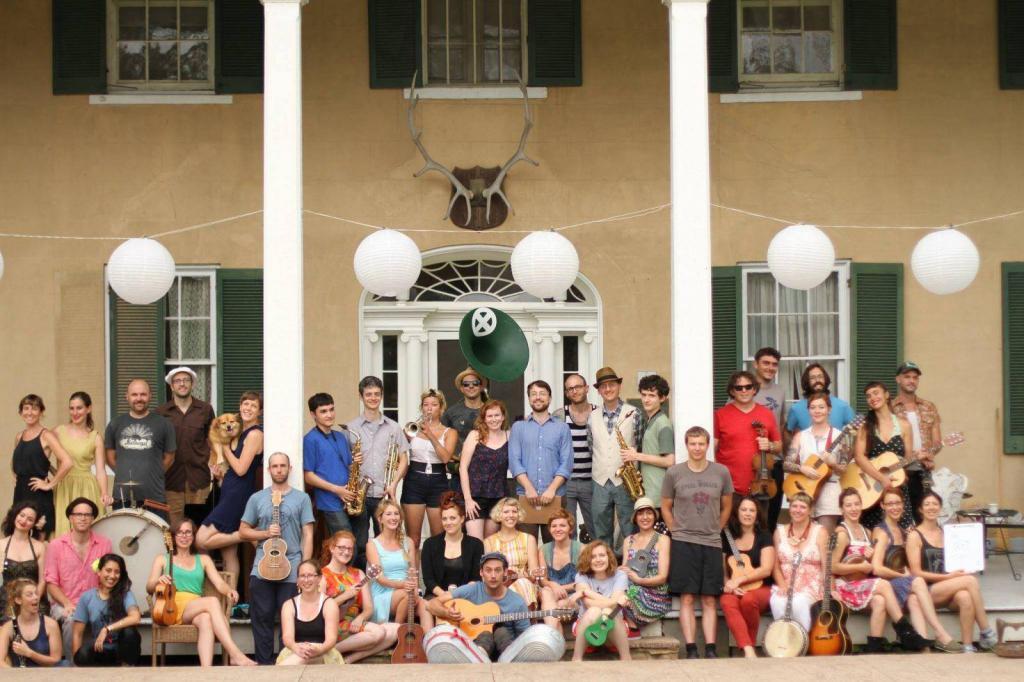
HOUSING
New Orleans six nights housing is included with the tuition price at the Bourbon Orleans Hotel in the heart of the French Quarter. 717 Orleans Street, New Orleans, LA 70116
New York has a special camp rate with the Doubletree by Hilton – Chelsea located at 128 West 29th St. New York, NY 10001
San Diego has discounted rooms available at the Lafayette Hotel & Suites 2223 El Cajon Blvd San Diego, CA 92104
Welbourne rooms are available in the main house but must be shared. You can bring your own camping gear and camp on the grounds. Bathroom and showers are available in the main house for those who camp. You can also stay off-site.
FOOD SUPPLIED
New Orleans: Breakfast and Lunch
New York: Lunch
San Diego: Food available at the hotel or nearby restaurants
Welbourne: Breakfast, Lunch, and Dinner
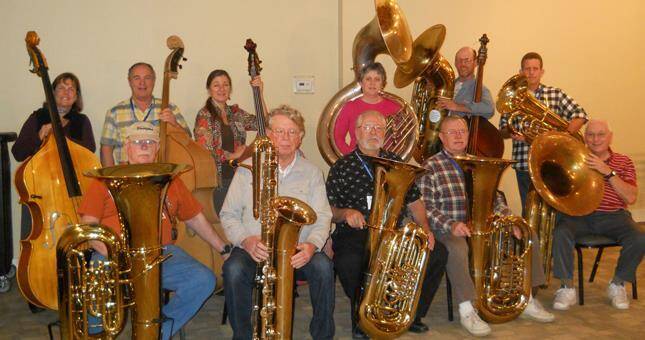
FACULTY
All of the camps’ faculties are comprised of full time working professional musicians. Although some on the faculties have VERY impressive academic credentials it’s the fact that the camps are not an antiseptic academic approach to music. Playing this style of jazz is a passion for them.
The music is food for the soul and these musicians are providing a feast!
THE FINAL CONCERT
NOTJC’s final concert is composed of ensembles that rehearse that day to perform two numbers each in a concert situation open to the public in the Ballroom of the Bourbon Orleans.
At the end of camp in San Diego, the campers perform a final concert on Sunday morning. Each ensemble performs one of the songs from camp. The concert is open to the general public. Then campers are all invited to stay and enjoy their faculty performing at the San Diego Jazz Club’s monthly Concert.
New York ensembles and faculty perform a final concert at prestigious Manhattan jazz clubs such as Birdland, Iridium and Swing 46. In 2018 NYHJC will team up with the Gotham Jazz Festival and campers will perform their final concert on the festival’s mainstage at the Player’s Club.
At the end of each week in Welbourne, they host a camp showcase for the neighboring residents in Middleburg. Performing is encouraged but totally optional.
ADDITIONAL FEATURES OF THE CAMPS
The New Orleans camp has guest lectures in the morning, jam sessions at night; both a 101 jam for first time campers and a jam session in the hotel bar where tourists come in to listen. There is even an opportunity for those more proficient campers to sit in at Fritzel’s (a jazz club across the street from the Bourbon Orleans Hotel). NOTJC also does a second line parade through the French Quarter and provides a chance to play at Preservation Hall. If the campers choose to stay an extra day there is a four-hour continuous jam session at a local jazz club.
San Diego has elective seminars on early jazz history, stage presence and presentation, music theory, and advanced TRAD Jazz Ensemble Topics. Camp ends at noon on Sunday followed by the AFCDJS monthly Concert/Dance featuring the Jazz Camp instructors.
The New York Jazz Camp gives their attendees the opportunity to play at a famous NY jazz club, and hear lectures from world-renowned scholars. There are off-site afternoon and evening jam sessions, NY sightseeing, a field trip to historic jazz sites as well as recommend nighttime concerts that feature hot jazz.
Welbourne unique venue allows the opportunity to swim in a creek, sip sweet tea on the porch, pet retired racehorses, and enjoy campfires while viewing starry skies night after night.
CROSS-POLLINATION
The idea for the New Orleans Jazz Camp started after hurricane Katrina. Three of us, Leslie Cooper, Nita Hemeter, and myself were bemoaning the fact that there was nowhere in New Orleans where anyone was teaching New Orleans traditional jazz. Leslie complained that she had to send her son to Sacramento to study New Orleans jazz. “Now that just ain’t right!” Leslie complained. I approached Katie Cavera, who was on the faculty of the San Diego Jazz Camp to see if they would let me check out how they ran their camp. We three New Orleans ladies had decided to start a jazz camp in New Orleans.
After some initial hesitation, the board in San Diego allowed me to be a fly on the wall in exchange for Alan Adams, their executive director, to attend our first camp. Many of the San Diego campers were excited to learn about the New Orleans camp and signed up. Then many of the new campers who came to New Orleans got the bug bite and went to the San Diego camp!
Molly Ryan and Bria Skonberg are both graduates of youth camps, Molly attended the Sacramento camp and Bria the Mammoth Lakes camp. Bria also attended the Sacramento adult camp and currently teaches at the Sacramento youth camp. They both now live and work as professional musicians in NYC. That love of early jazz and maybe just a tiny spark from the New Orleans camp run by all women, gave them the impetuous to start the New York camp. We have seen many of our New Orleans campers go up and enjoy the Big Apple version of what we have here in the Big Easy!
Many of the campers from all camps have gone home to start bands of their own or are gigging around town!
JAZZ FAMILY REUNION
The wonderful thing I have observed since we started our camp in New Orleans, is what lasting friendships have been formed by those who attended. When everyone shows up for registration or the “Meet and Greet” there is an explosion of energetic hellos and hugs. The same thing happens I’m told when campers meet at other camps. Postings on YouTube or Facebook of gigs or living room jam sessions are shared, viewed and supported with enthusiasm.
SCHOLARSHIPS & SPONSORS
Even if you don’t play you can support traditional jazz by donating to the camps scholarship programs or become a sponsor.
All of the camps give you a chance to rub octaves with the big boys. So, if you’ve been thinking about attending a jazz camp, go for it! You can meet the nicest people at the bridge of a song!
2018 CAMP DATES & WEBSITE LINKS
The San Diego Adult Jazz Camp (January 18-21, 2018)
www.sdjazzfest.org/index.php?id=jazzcamp
Ed Adams and Clint Baker – Directors
The Welbourne Jazz Camp (August)
www.welbournejazzcamp.com
Ben Polcer and Amy Johnson – co-founders
New York Hot Jazz Adult Camp (April 2-8, 2018)
www.nyhotjazzcamp.com
Molly Ryan and Bria Skonberg – co-founders
New Orleans Trad Jazz Camp (July 22-28, 2018)
www.newolreanstradjazzcamp.com
Banu Gibson – Executive Director
Leslie Cooper – Production Director
Related Storys: Welbourne: a Different Kind of Jazz Camp, New York Hot Jazz Camp: Molly and Bria Celebrate 5 Years, New Orleans Traditional Jazz Camp announces dates for 2019
Banu Gibson, in addition to being a nonpareil entertainer specializing in the music of the 1920s, ’30s, and ’40s, is Executive Director of the New Orleans Traditional Jazz Camp. Visit her online at banugibson.com.

